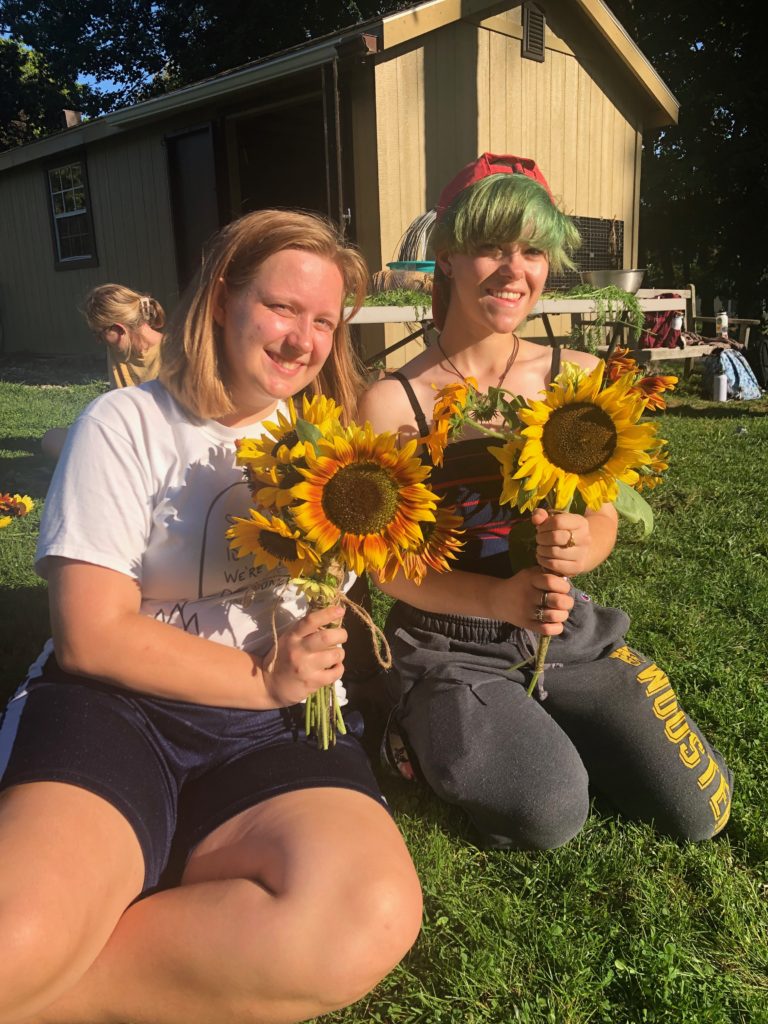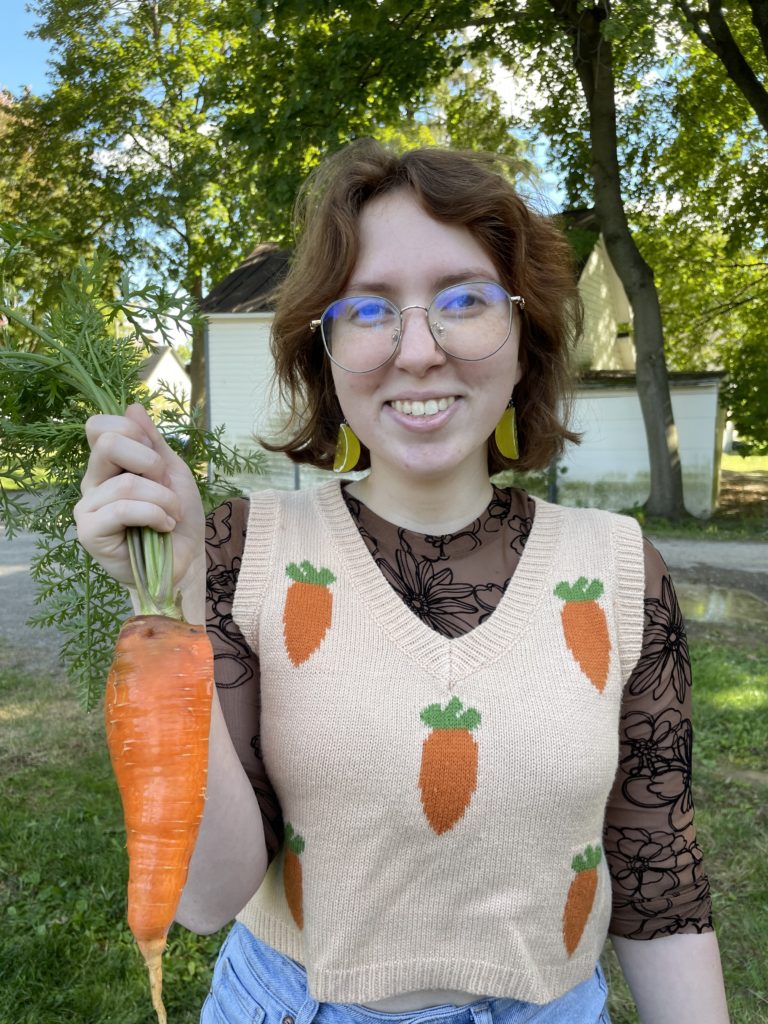
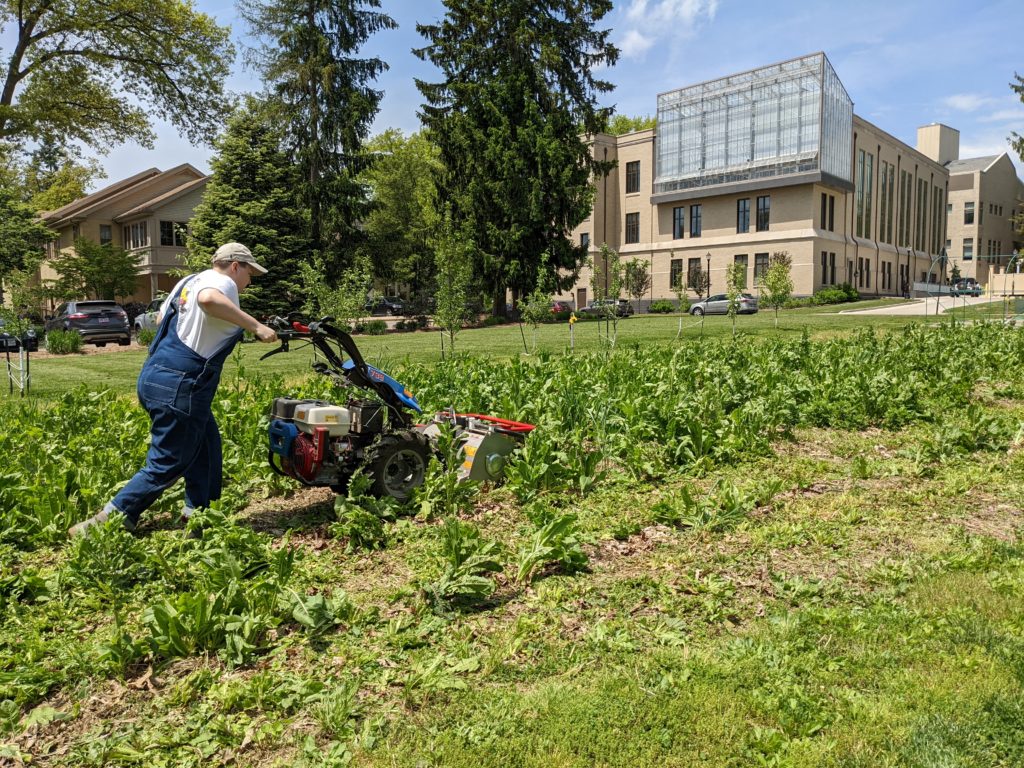
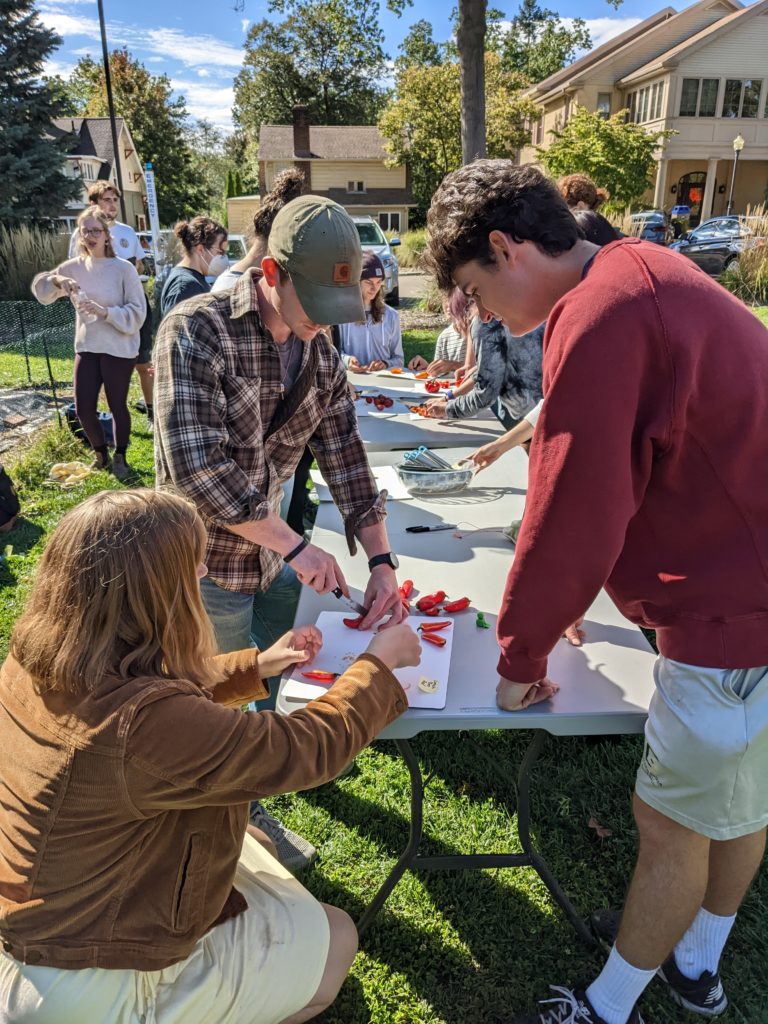
A Brief History of the Learning Garden
Ground broke on the College of Wooster Learning Garden in the summer of 2011, thanks to money granted by President Cornwell to the Environmental Studies Program through the Hewlett Mellon Fund for Institutional Renewal. The site chosen was an empty grassed lot on the corner of College Ave and Pearl St – the former site of a sanitarium! The most recent use of the site had been as a temporary parking lot during the renovation of Kauke Hall in the mid-2000s. Since then it had been returned to grass, but the ground proved so hard that a tractor-pulled tiller could not till the soil, so we hired a mini excavator to turn over the soil.
From summer 2011 through summer 2017 the garden continued to grow and evolve and serve as the learning lab for several classes, most notably ENVS 23000, “Sustainable Agriculture”. Students conducted experiments on the growth of salad greens under various conditions, as well as growing everything from corn to buckwheat to kale to radishes. In the summers the garden served as more of a community garden, tended by students staying on campus.
In the summer of 2018, the garden began a transition to its current location, on the grass lot across from Williams Hall and next to Admissions. What started as three long rows grew into five long rows, which were then divided into 15 beds each 20’ long by 3’ wide. To this was then added a larger plot 70’ long by 30’ wide, where crops can be grown and experiments can be run on a larger scale. In Spring 2020, 7 apple trees and 3 pear trees were planted alongside the larger plot. The garden on College & Pearl was converted to a pollinator garden growing perennial, pollinator-friendly flowers native to the Midwest.
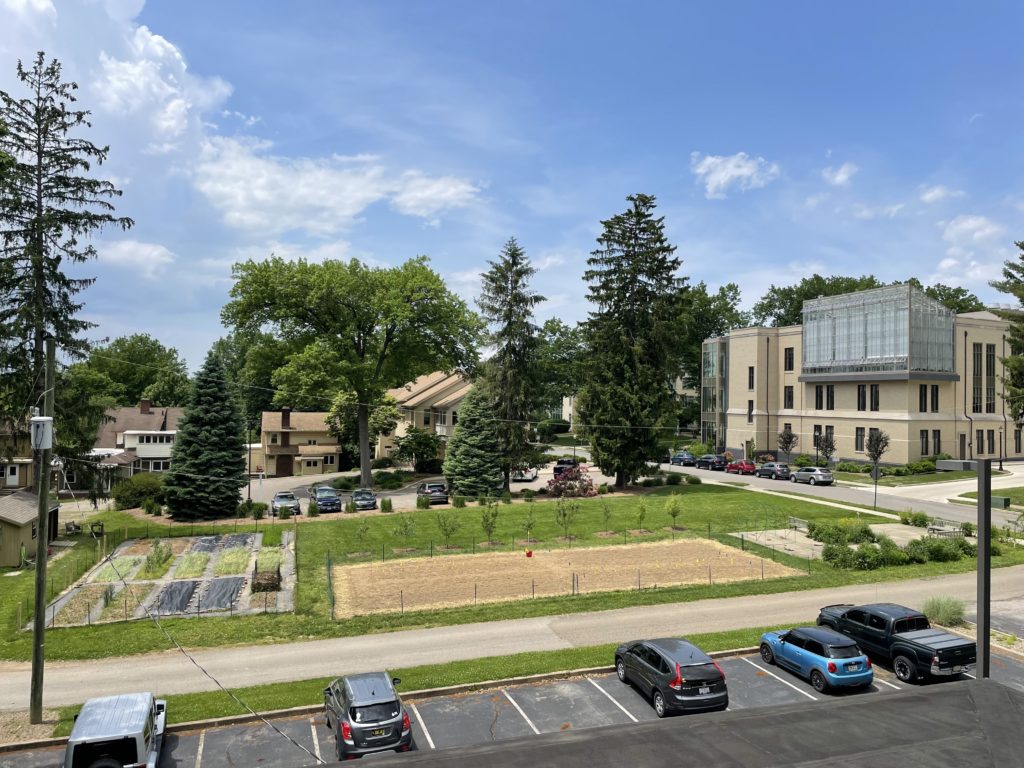
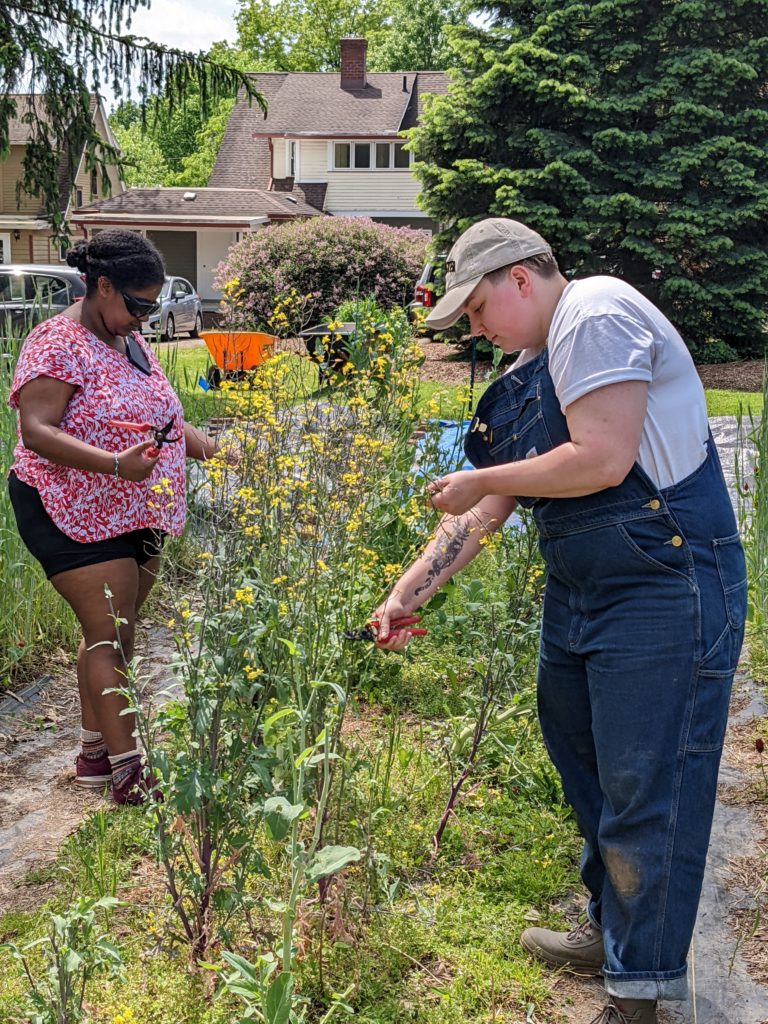

The new plots now serve a variety of roles, each with an embedded learning purpose:
- Growing salad greens which are harvested and sold to faculty and staff, with all proceeds going back to fund garden activities
- Growing cover crops to improve the soil and minimize weed pressure
- Growing heirloom varieties of numerous vegetables including tomatoes, peppers, and eggplant
- Growing unique combination of vegetables, such as the “three sisters” featuring corn, which provides a stalk for beans to climb up, which provide nitrogen to squash plants, whose leaves provide shade for the corn
The most recent development in the life of the garden is the formation of a student Gardening Club. The club is working on becoming chartered. Its intention is to cultivate the garden as a gathering space for any students who seek community and respite while growing and harvesting food. Students in the club have a say in what gets planted each spring and summer, with an emphasis placed on crops that lend themselves to group work and a more enjoyable harvest experience, such as potatoes and squash.

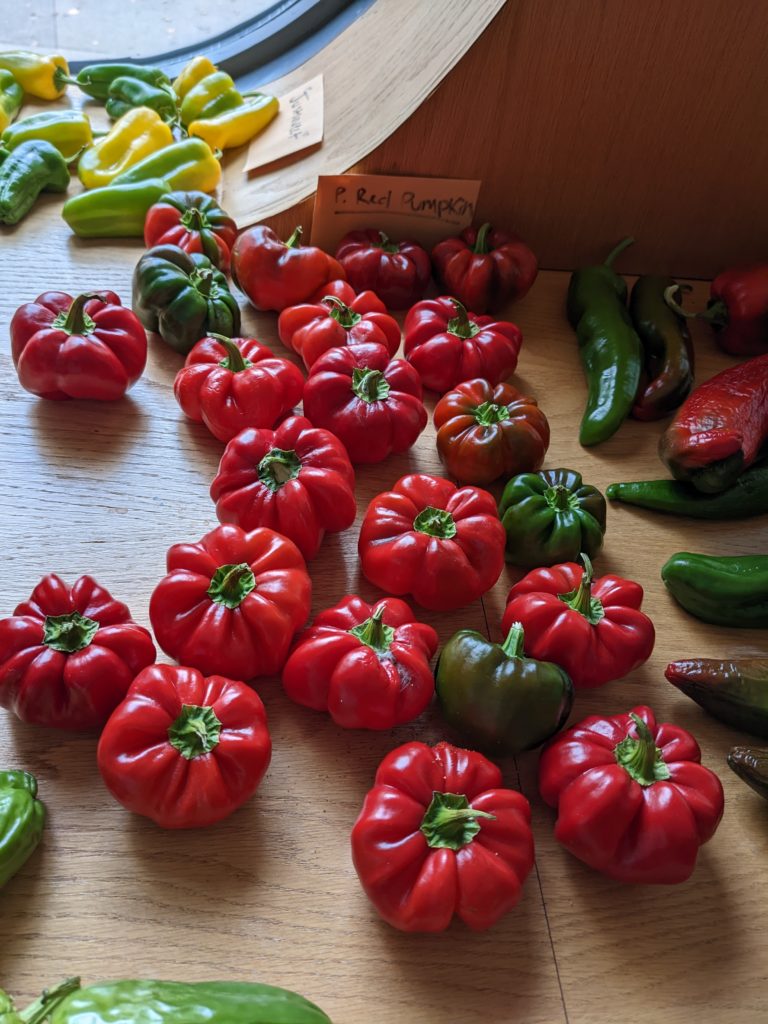

Pollinator Garden
For more information on the Pollinator Garden, the other garden on campus, check out the Pollinator Plot Blog run by Environmental Conservation Senior Ash Arons.

Garden Club
Students interested in getting involved with the Garden Club should reach out to the Environmental Studies Department Dr. Matthew Mariola. You can also keep up with the garden club on Instagram @woogardenclub.
